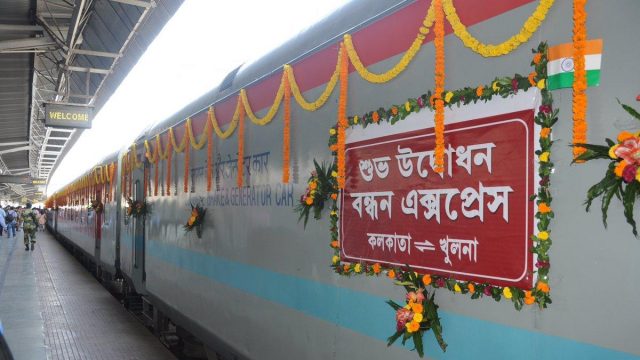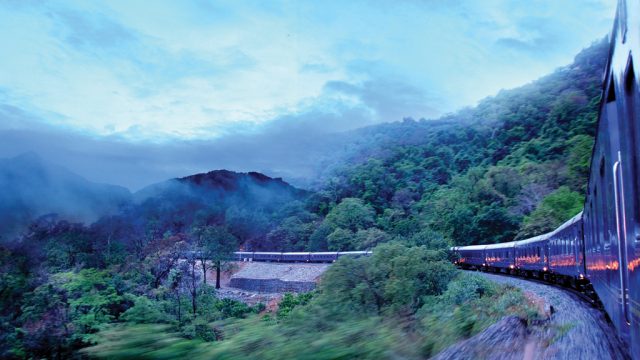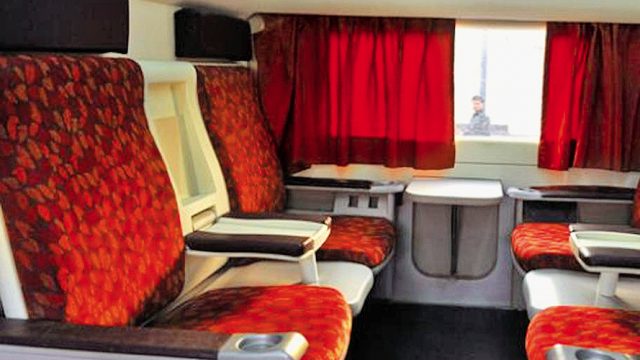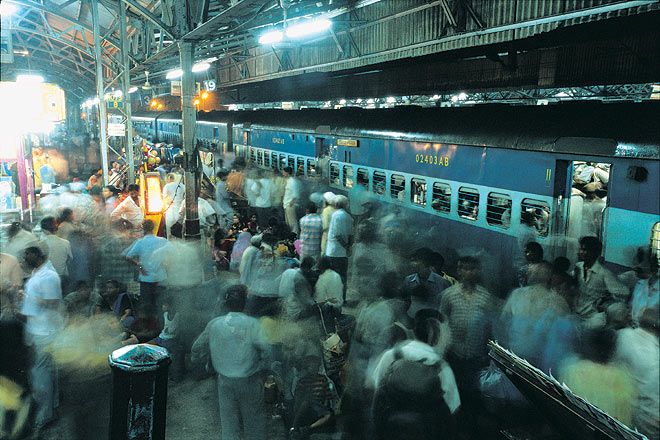My feelings about the railways have a great deal of ambivalence because when I was young, I
I belonged to a lower middle class family in Hyderabad and we used to visit relatives in Bangalore, Mangalore, and Bombay. I never used to look forward to train trips. I didn’t get this feeling many people have for the Indian Railways—of travel to places unknown, serendipity, the sense of anticipation, of the unexpected, one which you hope will be exciting and wonderful.
But as I grew up, my sense of travel by the railways began to grow pleasant for many reasons. Travelling made more sense, partly because we could afford a better class but also because one could by then communicate with strangers. By the time I was in my late teens, all journeys became a sense of discovery, of places, people, and regions. It’s in my temperament; I enjoy travelling.
There is something about the Indian Railways which fascinates me endlessly. First, if you don’t know the railways, you don’t know India. It is really the skeletal structure of the country. It sets out the geography; it gives you an incredible experience of the vast diversity of the people and the country.
Second, it has an incredible place in the history of modern India. It allowed national leaders like Mahatma Gandhi to go everywhere in the country. Without it, the Independence movement would not have developed in the manner in which it did. Visualising the ‘nation’ became easier because of the railways.
When I made Yatra, a 15-part television series in 1986, that was one of the thoughts I had in mind. Also, I wanted to use the railways as a means to introduce the country to ourselves. I took two of the longest train journeys: from Kanyakumari to Jogindernagar in Himachal Pradesh, and from Jaisalmer to Assam, to Badalpur on the border of Tripura. It was, to me, a discovery of India.
It reminded me of the way India must have been experienced by Adi Shankaracharya centuries ago. He was able to understand the extent of the country, the totality of the country’s culture, by walking from south to north, east to west.
My unit and I travelled on these two journeys and we did it in two months. It was an extraordinary trip—we had the whole train to ourselves, with actors, non-actors, people we’d pick up on our way to put in our story. It was a true Bharat Yatra. We could never have seen the country the way we did, the whole pageant of people of so many different ethnic groups speaking so many different languages, professing so many different faiths. But never did we feel that we were in a strange country. It’s always India.
The gist of what Jawaharlal Nehru said, in his Discovery of India, is that you can travel anywhere in India but the moment you cross the border, into Burma or Sri Lanka for example, you are in a strange land. Why is it that despite all the diversity we are able to connect with our people and our country in a way, within the geographical borders of India, that we don’t the moment we step across the border? If I go to Ladakh, I don’t feel like a stranger there. What is common between a Ladakhi and me?
My most recent train journey was a month and a half ago, to the Bandhavgarh National Park in Madhya Pradesh. I took the train that goes from Bombay to Calcutta via Allahabad, one of the oldest train lines in the country. It was a very pleasant journey. I was travelling first class, air-conditioned, the best way to travel in the Indian Railways. Certainly at my age—70—I do want the first class and air conditioning!
I’m married to a railway child. My father-in-law, A.N. Mukherji, was a railwayman his entire career. So my wife Nira’s association with the railways is very unlike mine. She connects to the railways in a strong emotional way. It’s a familiar ground, being on a train is like being home. I don’t share that experience. I have only been a traveller; I was not related to the railways.
I appreciate the railways enormously. Without it the Indian economy would collapse in a heap. One part of the country wouldn’t know how to connect with another. The number of people who depend on it for a livelihood, directly or indirectly, makes it the largest employer in the country.
Perhaps the railways has been romanticised, but that cannot be helped. It always offers the promise of taking you away from where you are. For a lot of people, where they are is not where they want to be. That explains its important role in art and literature.
What is wrong with the Indian Railways now? The pressure has grown to such an extent that it is catering to fifty or hundred times more people than it was meant to serve. Compared to what the British did, the lines they laid, we haven’t done even half that much, more than fifty years after Independence. We have also succeeded in taking the most profitable system, with its own budget (and it used to have a surplus budget), and bringing it over the years into deficit.
The reasons are largely political, the railways has been served poorly by rotten ministers who have been a yoke on it. Look at the last decade—we haven’t added to the railways’ services or the quality of travel, we haven’t increased the ability to carry freight. And for 90-95 percent of Indians, it is the only way to travel from one part of the country to another. That’s where the tragedy is. A service that is so important has been so ill served.
(As told to Aparna Narayanan)
Related Stories

Bandhan Express: Connecting Kolkata with Khulna
Rail services resume after 52 years connecting Kolkata (India) to Khulna (Bangladesh)

Deccan Odyssey: Affordable Luxury
Deccan Odyssey’s Early Bird Offer is here to turn your luxury dream into reality

Indian Railways: Hail the Rail
Indian Railways introduces new luxury coaches to two trains


